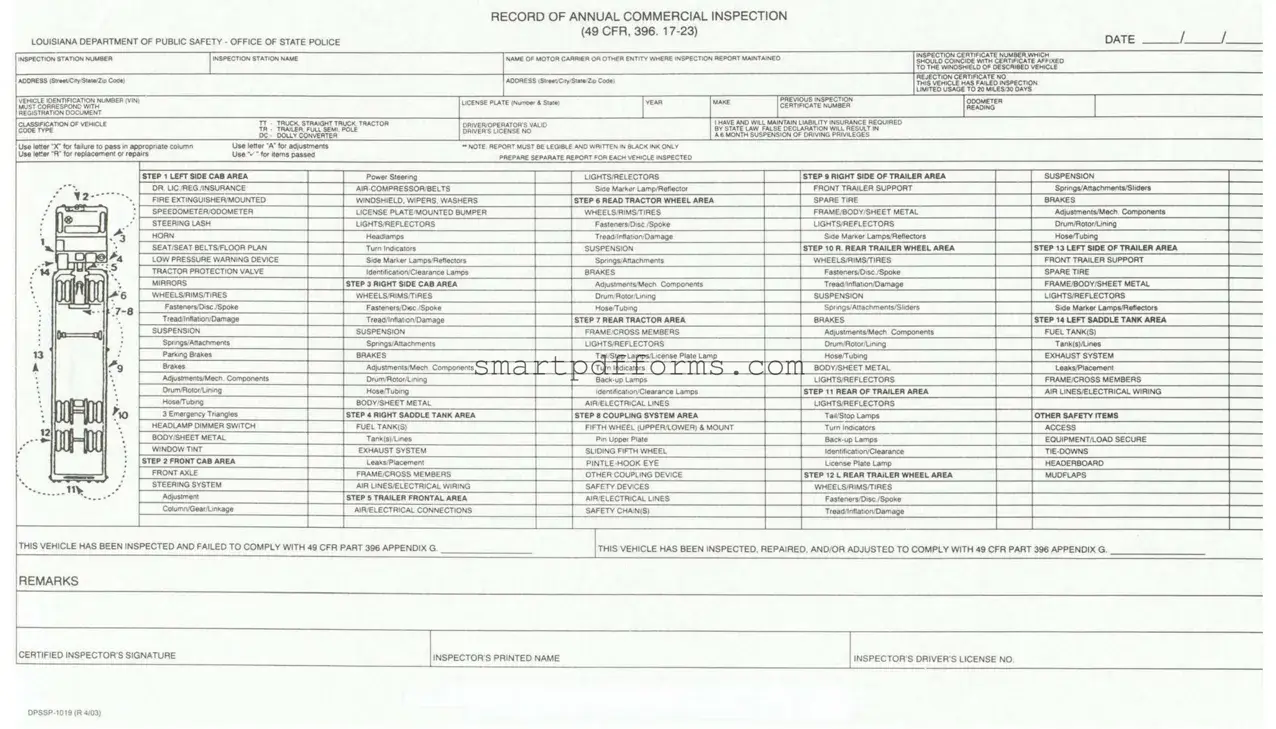Blank 49 Cfr Record Commercial Inspection PDF Template
The 49 CFR Record Commercial Inspection form is a crucial document outlined by the Louisiana Department of Public Safety - Office of State Police for the annual commercial vehicle inspection compliant with sections 396.17-23 of the Code of Federal Regulations. This detailed form records the inspection outcomes, including necessary adjustments, repairs, and replacements, ensuring that commercial vehicles meet the required safety standards. Ensure your commercial vehicle complies with federal safety regulations by clicking the button below to complete your form.
Make This Document Now

